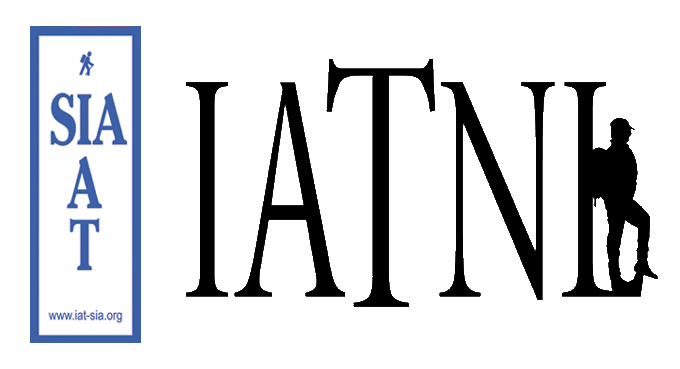In June 2010, the International Appalachian Trail welcomed Scotland’s West Highland Way as the first IAT trail outside of North America. In September 2013, the WHW will host the first IAT Annual General Meeting in Western Europe.


The well-known and scenic trail was approved for development in 1974 and opened on October 6, 1980 as the first official long distance footpath in Scotland. It is managed by the West Highland Way Management Group (WHWMG) consisting of the West Dunbartonshire Council, Stirling Council, Argyll & Bute Council, Highland Council, and Loch Lomond and The Trossachs National Park, site of the 2013 IAT AGM.

The 154km (96mile) south to north linear trail echoes with stories of the past,
including Rob Roy MacGregor, as it follows historic old drove and coaching roads,
disused railway lines, and military roads built to
help control the Jacobite Clans.

It starts at Milngavie, passes through Mugdock Country Park, follows the shores of Loch Lomond while passing Ben Lomond, passes through Glen Falloch and Strathfillan, crosses Rannoch Moor, past Buachaille Etive Mor to the head of Glencoe, climbes the Devil’s Staircase, descends to sea level to cross the River Leven at the head of Loch Leven, before entering Lairigmor and Glen Nevis and finishing at Gordon Square in Fort William near the base of Ben Nevis, which at 1,344 meters (4,409 ft) is the highest mountain in the British Isles.

Glen Nevis
The terrain ranges from lowland moors, dense woodland and rolling hills, to the towering mountains of the Scottish Highlands. These environments provide habitat for a diverse range of wildlife species, both flora and fauna. Geologically, the hard rock of the north meets the
younger sandstone and conglomerates of the south at the Highland Boundary Fault line. This division between “highlands” and “lowlands” is best seen from Conic Hill.

Walking the West Highland Way begins with a fairly easy stroll following a riverside and disused railway track through the Glasgow suburbs, with the only high ground seen on the first day’s walk being the hills of Dumgoyach and Dumgoyne. Once past Drymen, walkers have the first chance to select from two options: either continue on the flat or take the path over Conic Hill (358m/1175ft).

View of Loch Lomond from Conic Hill
(The popularity of the Conic Hill section of the WHW by Balmaha has resulted in considerable visitor impact and erosion problems over the years. This section of the Way is one of the route ‘hot spots’ for walkers and attracts in excess of 80,000 visits per year. Walkers climb Conic Hill to take in the panoramic views of Loch Lomond and its many islands. In order to address the path erosion problems the Loch Lomond & the Trossachs National Park Authority allocated £200,000.00 towards path repair works and in turn this repair work will also help protect the Sites of Special Scientific Interest on the hill.

Path repair works were implemented during February and March 2013 over a 4 km stretch of the route and involved machine and hand built construction to ensure a good fit in the upland environment. Repair works were also carried out to two bridges and steps on the approaches to Conic Hill. The route was re-opened to walkers on the 15th April in readiness for the summer season.)

View from Conic Hill after repair work
Beyond this, the path descends to the shore of Loch Lomond at Balmaha and follows the shoreline via Rowardennan and Inversnaid to Inverarnan. At Rowardennan, the more adventurous may decide to take a detour and climb Ben Lomond. At 974m (3185ft) Ben Lomond is the most southerly of Scotland’s munros (mountains over 3000ft). Leaving Loch Lomond, the Way follows Glen Falloch between a number of mountain peaks. To the North are Ben Dubhcraig, Ben Oss and Ben Lui while, to the South lie Beinn Chabhair, An Caistreal and Stob Glas.

View of Ben Lomond across Loch Lomond
Beyond Crianlarich, the Way turns North and follows the A82, criss-crossing it on a number of occasions. From Tyndrum to Bridge of Orchy, the Way passes through more rugged scenery with Beinn Dorain to the East and Beinn Bhreach-liath to the West. From Bridge of Orchy, the Way continues North Westward to pass the head of Loch Tulla at Inveroran from where it changes dramatically. The Way follows an old cobbled drove road rising to the Black Mount, an area of high moorland between the mountains clustered around Coire Ba to the West and the vast expanse of Rannoch Moor to the East.

Black Mount
This is the most remote and desolate part of the Way and walkers should be aware that there is no escape route or shelter for the next 16km (10m). Due to the open aspect the effects of wind and weather can be very unpleasant so be sure you are prepared for any eventualities. From the summit, the Way descends to the isolated Kingshouse Hotel situated at the junction of Glen Etive and Glen Coe. Here the scenery once more changes to dramatic mountain terrain, dominated by the impressive Buachaille Etive Mor which stands as a sentry to the stunning Glen Coe.

Glen Coe
From Kingshouse to Altnafeadh the Way again follows the A82 before striking North to climb the Devil’s Staircase, a 259m ascent to the highest point on the Way (548m). From here there is a view over the peaks of Glen Coe and Ben Nevis can be seen in the distance North over the Mamores (weather permitting!) From here there is a long, gentle descent back to sea level at Kinlochleven. The path runs along the mountainside with spectacular views over the Mamores and miles of open wilderness stretching away to the East.

View of Kinlochleven and Loch Leven
The path rises out of Kinlochleven in a steady 250m climb to join a military road which traverses the mountainside, through a u-shaped valley to a high pass, the Lairigmor at 330m before finally descending, through a series of pine forests to Glen Nevis. From here it is a short walk to the end of the West Highland Way at Fort William, in the shadow of Ben Nevis.

IAT Trek to the summit of Ben Nevis, June 2009
It was here in June 2009 that the IAT, by invitation of the British Geological Survey and its partner organizations, first gathered to discuss the possible extention of the International Appalachian Trail to Western Europe. What a ride … or is that walk? … it has been!!

IAT Meeting at Fort William, June 2009
To learn more about the West Highland Way,
visit their website
…. or come join us at the IAT AGM at Loch Lomond and The Trossachs National Park,
September 18-20, 2013.

